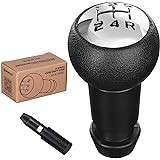Vehicles which use the roads of Spain must be fitted with an audible warning device by law. That includes bicycles, and electric scooters, and those without face a fine. On motor vehicles the audible warning device normally takes the form of a horn and is integral in the vehicle.
Article 110 of the traffic law details when a horn can be used. Aside from the authorised reasons we will explain, the law is quite clear that “unmotivated or exaggerated use is prohibited”.
Priority vehicles use audible warnings, such as the Guardia Civil of other emergency services, when they are acting as “priority” vehicles. In other words, responding to an emergency. In the event of an emergency situation, any private vehicle can take on the role of a priority vehicle, at which point the horn would be used, along with other visual devices such as waving a handkerchief out of the window. We explain more about that concept on the website, spanishtrafficlaw.es, where Article 70 deals with that rule, here we just needed to introduce it as an exception to the norm.
Under normal circumstances, acoustic warnings can only be made by drivers of non-priority vehicles, in other words, vehicles not responding to an emergency, in a very limited number of occasions.
The primary role of the audible warning, or horn, is to alert other road users of our presence, and can be used to avoid a possible collision.
On narrow roads where there are often two cars and there are bends that prevent the visibility of traffic in the opposite direction, the horn is usually used to warn of our presence to approaching traffic.
Out of populated areas, to warn the driver of another vehicle of your intention to overtake. You can sound the horn before overtaking a vehicle to inform the driver of your intention to overtake it, so that the driver is made aware of your intention and remains to the right edge of the road.
To warn of their presence to the other road users, in accordance with the provisions of Article 70.
We must never use our horn out of anger or frustration, and remember, the rule is clear when it comes to the risk of a collision, the horn should only be used to avoid a situation, in other words, before it has happened.
To give a working example, if we see a vehicle at a junction through which we have priority, but we think that the vehicle MAY pull out in front of us, perhaps because they haven’t seen us, then that is a justified and correct use of the horn. If, however, that vehicle has already pulled out in front of us, then the use of the horn would not serve for avoidance in any way. Our concentration and actions should be wholly about avoiding a worse situation. Using the horn, could in fact make matters worse.
The reason behind this logic, as neuroscientist Rachelle Summers explained on her Instagram channel, is that the horn is used to draw attention, it is a distraction in a neurological sense, and so if a driver has entered into a risky situation, the most important course of action is to get out of that situation safely. If we sound our horn, we are causing a distraction and adding to both the confusion and the elements that the mistaken driver must deal with, thus adding to the cognative load and potential disastrous outcome.
The second neurological reason is that overuse of the horn can reduce the impact being considerably diminished, as the brain becomes accustomed to it, and it no longer serves as the warning it is intended to be.
The post Misuse of the Horn can Have Serious Consequences first appeared on N332.es – Driving In Spain.





